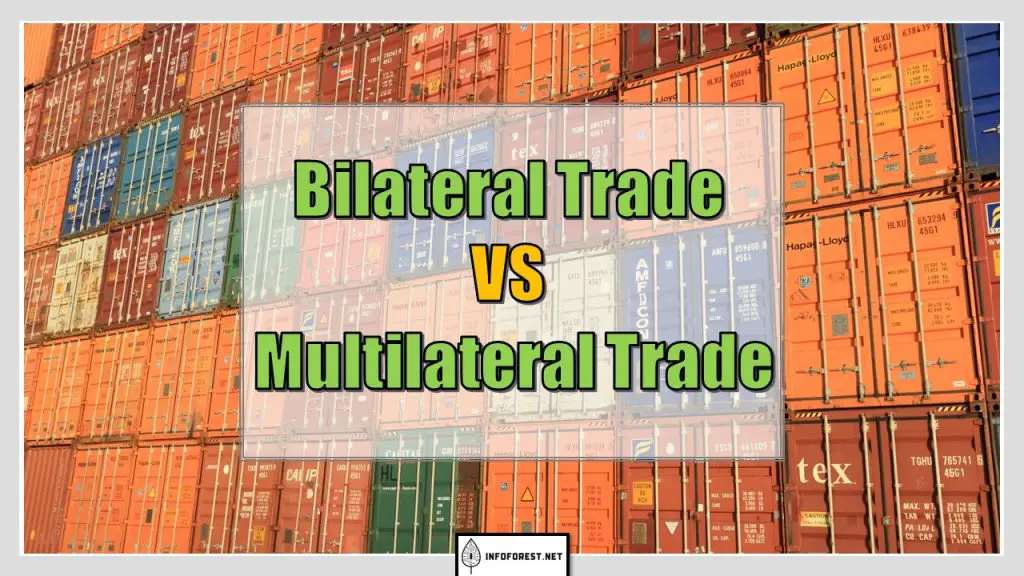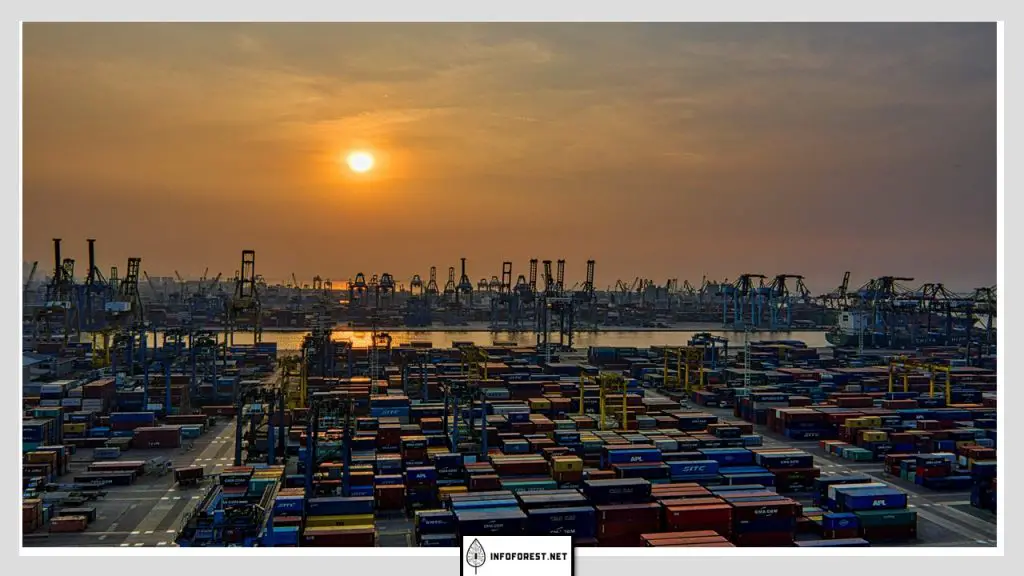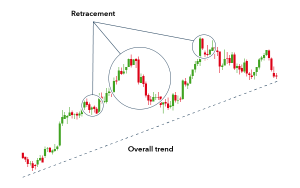
Bilateral trade refers to trade between two countries, while multilateral trade refers to trade between three or more countries. Bilateral trade agreements are formed between two countries to reduce tariffs and other trade barriers, while multilateral trade agreements involve a group of countries working together to lower barriers and increase trade among themselves. The World Trade Organization (WTO) is an example of a multilateral trade agreement.
Bilateral Trade
Bilateral trade refers to trade between two countries. This type of trade is governed by bilateral trade agreements, which are formed between two countries to reduce tariffs and other trade barriers and to promote trade between the two countries. Bilateral trade agreements may also include provisions for cooperation in areas such as intellectual property rights, investment, and services. These agreements can be beneficial for countries that have a strong trade relationship, as they can increase exports and create jobs. However, they can also lead to trade imbalances and can be politically controversial.
Multilateral Trade
Multilateral trade refers to trade between three or more countries. This type of trade is governed by multilateral trade agreements, which involve a group of countries working together to lower trade barriers and increase trade among themselves. One of the most well-known examples of a multilateral trade agreement is the World Trade Organization (WTO). The WTO is an international organization that oversees and regulates international trade, and its member countries agree to follow its rules and regulations to promote fair and open trade. Other examples of multilateral trade agreements include the North American Free Trade Agreement (NAFTA) and the Trans-Pacific Partnership (TPP). These agreements aim to reduce tariffs, quotas, and other trade barriers, and to create a more level playing field for member countries to trade with one another.

The main differences
The main differences between bilateral trade and multilateral trade are:
- A number of countries involved: Bilateral trade involves only two countries, while multilateral trade involves three or more countries.
- Scope of the agreement: Bilateral trade agreements tend to be more specific and targeted, addressing issues such as tariffs and quotas between two countries. Multilateral trade agreements, on the other hand, tend to be broader in scope and address issues such as intellectual property rights, investment, and services for a group of countries.
- Flexibility: Bilateral trade agreements can be more flexible as they are between two countries, and can be adjusted or renegotiated as needed. Multilateral trade agreements tend to be more rigid, as they involve a larger number of countries and require a consensus among all members to make changes.
- Complexity: Multilateral trade agreements tend to be more complex than bilateral agreements due to the presence of more parties, more diverse interests, and more complex negotiations.
- Impact: Multilateral trade agreements have a broader impact on the global economy as they involve many countries and have the potential to shape global trade rules and regulations. Bilateral trade agreements, on the other hand, tend to have a more limited impact and primarily affect trade between the two countries involved.
We also invite you not to miss our other popular articles such as:
Difference Between Rose Gold and Yellow Gold– ChatGPT–Difference between left and right Twix–Difference Between Eastern Time Zone and Central Time Zone–Difference Between Capitalism and Communism– Difference Between EST and EDT–How many weeks in a Year– Difference Between Evening and Afternoon –Democrat vs Republican
Examples of Bilateral Trade and Multilateral Trade
Bilateral trade examples include:
- The U.S.-Mexico-Canada Agreement (USMCA), replaced the North American Free Trade Agreement (NAFTA) and governs trade between the United States, Mexico, and Canada.
- The U.S.-China Phase One Economic and Trade Agreement, which was signed in 2020 and aims to reduce tariffs and increase trade between the United States and China.
- The U.S.-Japan Trade Agreement, which was signed in 2019 and aims to reduce tariffs and increase trade between the United States and Japan.
Multilateral trade examples include:
- The World Trade Organization (WTO), which is an international organization that oversees and regulates international trade, and its member countries agree to follow its rules and regulations to promote fair and open trade.
- The Trans-Pacific Partnership (TPP), was a proposed trade agreement between 12 Pacific Rim countries, but the U.S. withdrew and the other member countries signed the Comprehensive and Progressive Agreement for Trans-Pacific Partnership (CPTPP)
- The European Union (EU) is an example of a multilateral trade agreement, which allows free trade among its member countries
It’s worth noting that most of trade agreements are a combination of both Bilateral and Multilateral trade agreements. For example, The EU is a multilateral agreement between its member countries but also has bilateral agreements with other countries.

Comparison Table
comparison of the main differences between bilateral trade and multilateral trade in a list format.
| Feature | Bilateral Trade | Multilateral Trade |
| Number of countries involved | Two | Three or more |
| Scope of the agreement | Specific and targeted | Broader in scope |
| Flexibility | More flexible | More rigid |
| Complexity | Less complex | More complex |
| Impact | Limited, affects two countries | Broader affects many countries and can shape global trade rules and regulations |
Please note that this is a general comparison and not all bilateral or multilateral trade agreements would fit in every category, it would vary depending on the specifics of the agreement.
Most Viewed Articles
Conclusion
In conclusion, bilateral trade refers to trade between two countries, while multilateral trade refers to trade between three or more countries. Bilateral trade agreements are formed between two countries to reduce tariffs and other trade barriers, while multilateral trade agreements involve a group of countries working together to lower barriers and increase trade among themselves. Bilateral trade agreements tend to be more specific and targeted, addressing issues such as tariffs and quotas between two countries, while multilateral trade agreements tend to be broader in scope and address issues such as intellectual property rights, investment, and services for a group of countries. Bilateral trade agreements can be more flexible, but multilateral trade agreements tend to be more complex and require a consensus among all members to make changes. Multilateral trade agreements have a broader impact on the global economy as they involve many countries and have the potential to shape global trade rules and regulations, while bilateral trade agreements tend to have a more limited impact and primarily affect trade between the two countries involved.
We also invite you not to miss our other popular articles such as:
Bad Debts and Doubtful Debts– Absolute Advantage vs Comparative Advantage–What is Portfolio –How To Write a Cover Letter – What is Climate change– Intermittent Fasting–What is Creatine–What is ADHD–How to write a CV– What Is Collagen–What Is Dragon Fruit– Mediterranean Diet–Characteristics of a Narcissist–What is SEM – What is SEO–What is RSV– What Is Web 3.0–What is NFT–What is a Recession– What Is Bitcoin– What Is PayPal and How Does it Work – Kilometer vs Mile – How to get rid of hiccups What does TBH mean – What does NSFW mean – What does IG mean–What does CAP mean– What is normal blood pressure –What is the rarest blood type–Difference Between Hotel And Motel – Differences Between Chinese and Japanese and Difference Between Zip Code and Postal Code










Good post. I learn something totally new and challenging on blogs I stumbleupon on a daily basis. Its always useful to read content from other authors and practice something from their websites.
Hi there, I enjoy reading all of your article.
I wanted to write a little comment to support you.